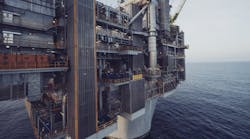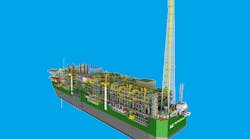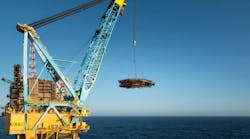Statoil is introducing bacteria to the Norne reservoir to improve oil recovery. According to pilot tests the company has performed, the new technology could help to produce an additional 30 million bbl of crude over the producing lifetime of the field, equivalent to 6% of estimated recoverable reserves.
Egil Sunde, a marine microbiologist who has worked on the bacteria technology development from its beginning, stresses that the application of the technology on Norne is not a test. The technology has already been fully tested, and will be applied full-scale on Norne.
It has taken 10 years to bring the technology development to fruition, Sunde says. The use of bacteria in this way is not new; their use for cleaning up oil spills on beaches is more familiar. The bacteria are present in seawater, so ensuring a supply of them is not a problem. Where difficulties have been encountered is in making the leap from laboratory to field application. Other projects seeking to enlist the aid of bacteria in improving oil recovery have worked well in the lab, but not in the reservoir.
Growth solution
One part of Statoil's solution lies in the way oxygen and nutrients are used to make the bacteria grow. This part is not new. The technique is covered by a patent the company was granted in 1992. What took a long time to perfect was adjusting the environment to make the bacteria look to oil for their carbon source. This involved finding the right combination of parameters, such as acidity, temperature, and salinity.
When introduced into the reservoir along with the injection water, the carbon-hungry bacteria want to get access to the oil. They produce enzymes that have a surfactant effect, breaking down the surface tension between the water and the oil, and reducing the capillary forces that keep the oil in place in the reservoir rock. The oil becomes water-wet, and a proportion of it is swept by the water flow to the production well.
A second benefit, Sunde says, is that the bacteria bring into play a mechanism that reduces water permeability. This forces the water to flow out from the direct line between the injection well and the corresponding production well which it would otherwise follow, thus improving the sweep.
Tertiary recovery
The use of bacteria in this way is a tertiary form of improved oil recovery, along with the use of artificial surfactants and soaps. However, whereas vast sums have been spent on researching surfactant flooding, Statoil's research costs have been no more than several million dollars. "We've come a long way with a little research spending," says Sunde. The use of bacteria is also much more effective than artificial surfactants, he says.
Austrian oil company OMV was Statoil's partner in the research project. It made a valuable contribution, not least in providing some older onshore reservoirs in Austria for trial runs. Using a smaller reservoir makes the calculations easier, says Sunde. A significant and stable water cut is also required.
The full-scale application of the technology on Norne got underway, following the installation of a fertilizer plant for cultivating the bacteria. This is a small unit consisting of a tank and pump, which represents a tiny cost compared with the expected payback. "We won't spend more on fertilizer than some platforms spend on biocides to kill bugs," says Sunde.
Raw water injection
Norne has been chosen because it uses a raw water injection system. The tubulars in the injection system are made of stainless steel, so the oxygen does not need to be removed from the injection water. No corrosion problems have arisen in the injection system, and in fact, a fourth injection pump was installed earlier this year to boost capacity beyond the current level of approximately 200,000 b/d.
But Norne is rather unusual in this respect. The industry has become accustomed to using less corrosion resistant materials and instead treating injection water to remove the oxygen. Hence, on fields where the owners wanted to introduce the bacteria technology, a careful calculation of the necessary investment would have to be undertaken.
Changing out the tubulars in the injection system would be expensive, and particularly so in the case of subsea wells. On the other hand, if a field were already nearing the end of its producing life, it might be quite acceptable to ignore corrosion risks, Sunde says.
For new field developments, Statoil's first-choice policy is not to remove the oxygen from injection water, thus giving itself the option of using the bacteria technology. For others in the industry, there could be cultural barriers to overcome before the technology could be applied, since the habit of treating injection water is strongly fixed, Sunde says. However, tubular materials of proven corrosion resistance are available, so established habits should not be allowed to get in the way if an overall economic benefit in using the technology can be perceived.
The benefits of bacteria injection are unlikely to be demonstrated on Norne in the short term. Bacteria injection will take time to boost recovery, and an initial period of experimentation will be required to achieve an optimal level of bacterial saturation in the water. Even when this has been established, measuring the effect will not be easy. Residual oil volumes will be measured in a number of ways, for example, by modeling the sweep and water breakthrough times and comparing the outcome with areas of the reservoir not exposed to the bacteria. Another important source of information on residual oil will be the logs run to help locate the oil/water contact when new wells are being drilled.
From an environmental point of view, the bacteria technology presents no problems. Few of the bacteria make it through the reservoir, back onto the platform and eventually back into the sea. Those that do will not have any harmful effect, though in the event of an oil spill, they will improve the sea's ability to biodegrade the oil, Sunde says.






